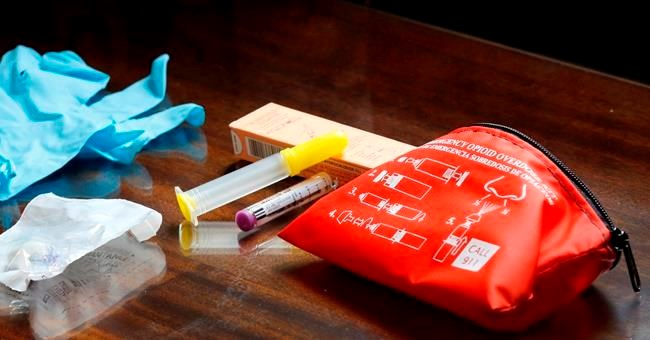Island Health was the only health authority in B.C. to see an increase in overdose deaths in June, according to statistics released Friday.
At least 23 people on Vancouver Island died from an illicit-drug overdose in June, up from 11 in May, according to the B.C. Coroners Service. This brings the total to 123 deaths in the first half of this year. The total for all of 2016 was 160.
Dr. Murray Fyfe, a medical health officer with Island Health, said the dip in May was the anomaly — most months have seen death tolls in the mid-20s.
He said it’s hard to pinpoint the cause of the fluctuations.
It “could be related to the variants in the drugs circulating,” he said. “It’s really unpredictable.” The statistics also showed Victoria remains among the top three municipalities for deaths, along with Vancouver and Surrey.
The latest statistics show the number of overdose deaths in B.C. in 2017 is on pace to eclipse last year by more than 60 per cent. The deadly opioid fentanyl, which is several times more potent than heroin, is now present in nearly 80 per cent of illicit-drug deaths.
“There is no other category of preventable deaths with these kinds of numbers,” said chief coroner Lisa Lapointe, noting that without fentanyl in the drug supply, the number of overdose deaths per year would remain at about 300.
“I have not seen anything like this is my career.”
Across B.C., more than 111 people died of illicit-drug overdoses in June, bringing the total for the first half of the year to 780. In 2016, the worst year on record, a total of 967 people died. In 2015, there were 519 deaths.
Lapointe was joined at Friday’s press conference by the province’s chief medical health officer, Dr. Perry Kendall, and the minister of addictions and mental health, Judy Darcy.
All acknowledged that the crisis is worsening despite efforts to curtail it. There have been efforts to expand access to the opioid antidote naloxone and rapid-access treatment, and several emergency overdose-prevention sites were opened. Federal approval has been received for supervised-consumption sites, including one in Victoria.
“We need to do more,” said Kendall, citing ideas such as making naloxone kits and training available online to reach rural residents and those who would not otherwise access public services.
Darcy said one of the issues her ministry hopes to address is a lack of treatment and recovery options.
“We don’t have treatment on demand, and we know people are waiting in emergency rooms and as outpatients,” she said. “We don’t have a system where you ask for help once and get help fast.”
Katrina Jensen at AIDS Vancouver Island said the number of deaths in June on the Island is “really upsetting and incredibly sad.”
She said each month, front-line workers in the organization, which has offices across the Island and operates overdose-prevention sites, hope for some sign of improvement.
In the past few months, they have trained hundreds of people to administer naloxone.
“There are a small number of people reaching out to us that we haven’t seen before, which is promising because the greatest risk is to people using alone,” said Jensen. But the increasing rate of overdoses and the year-long wait for Victoria’s first supervised consumption site to open is daunting.
“We will keep doing what we’re doing. We need to focus on what’s happening in front of us,” she said.
“I’d like to see more engaging with family members who know people in their families are doing drugs and to talk about how to reach out and help.”
B.C.’s drug crisis by the numbers
Illicit drug deaths in B.C.
• 2007 — 202
• 2015 — 519
• 2016 — 978
• First half of 2017 — 780
Vancouver Island overdose deaths
• 2007 — 35
• 2015 — 66
• 2016 — 160
• First half of 2017 — 123
More statistics
• Day of the week most deaths occur — Friday
• Percentage of deaths that occur indoors — 89.4 per cent
• Percentage of B.C. deaths in which fentanyl was present — 78 per cent
• Top three municipalities for overdose deaths in 2017 — Vancouver, Surrey, Victoria
• Average number of deaths per month in Victoria this year — 8.3
• Number of Victoria overdose deaths in which was fentanyl present — 38 (to end of May)
Source: B.C. Coroners Service



